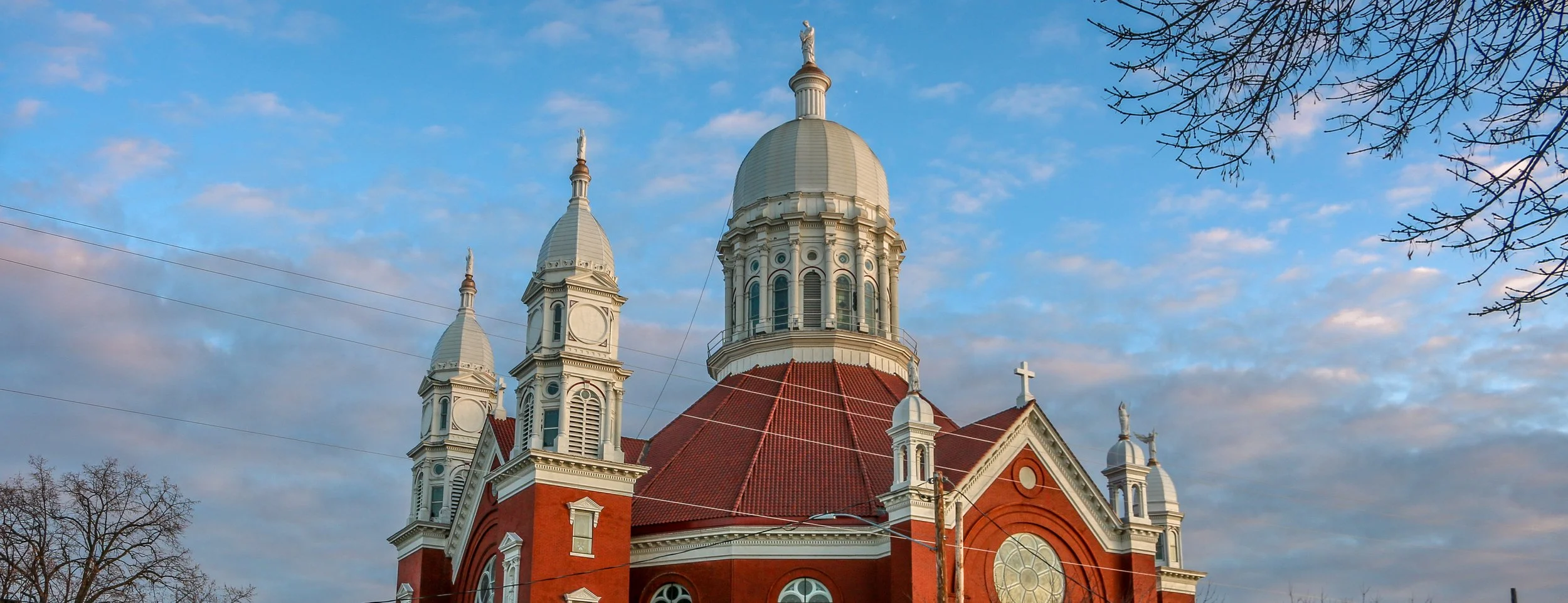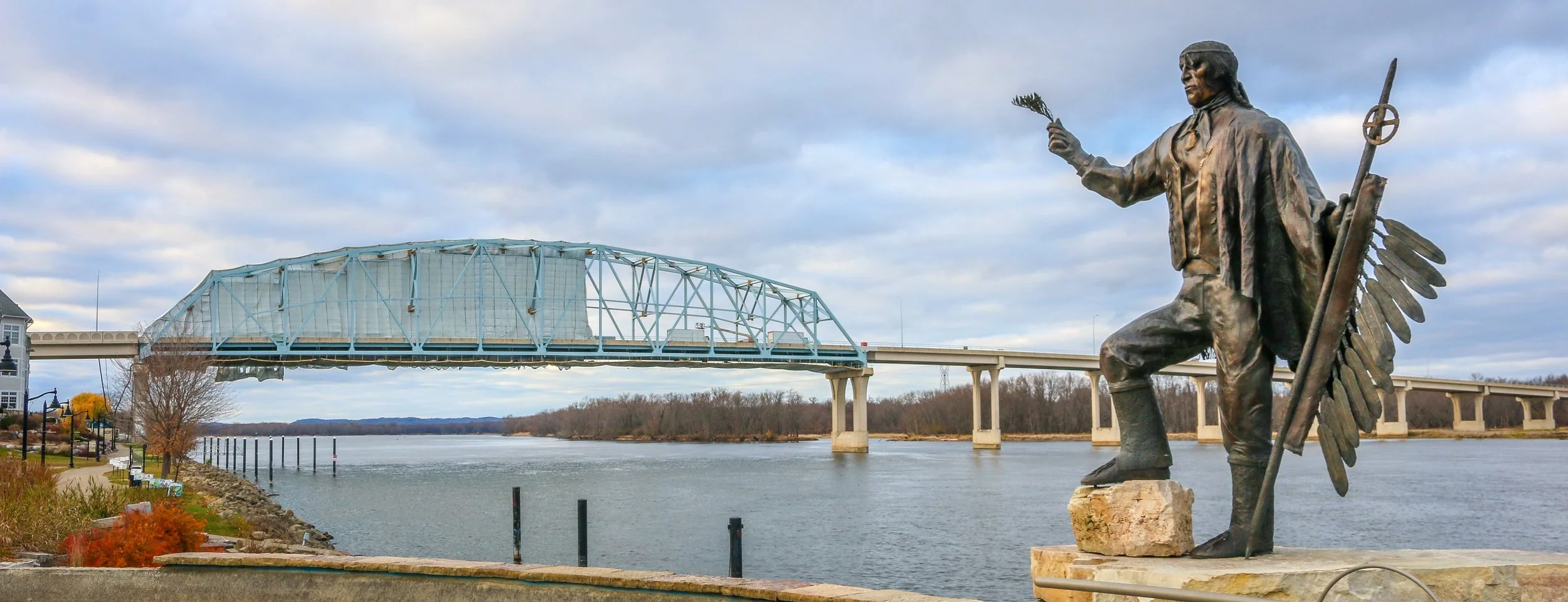Winona was my last stop during my six week stay in Minnesota. This small city with a population of about 26,000 is right on the Mississippi River and the Great River Road in the far southeast of the state. This land was once home to the Mdewakanton Band of Lakota Indians and is named for the first-born daughter of Chief Wabasha III. Originally settled in 1851, Winona grew to be a major rail and steamboat town with wheat and lumber playing a major role as well. Today, there are some great old buildings lining the streets and the St. Stanislaus Basilica is one of the most beautiful churches in the state if not the country. I also enjoyed a stop in the Historic Society museum located in the old armory and the beautiful stained glass windows at Merchants National Bank. I wasn’t in Winona long as it was time for me to be heading on down the road, but I hope you enjoy these few photos from my stay.
Viewing entries tagged
Small Town MN
When Europeans first made their way up the Mississippi River, these lands were occupied by the Mdewakanton Dakota people who were led by Chief Wa-pa-shaw. The area was settled in 1826 and officially recognized after the Treaty of Prairie du Chien was signed in 1830. The fledgling town was named after the Chief as “Wabasha” and is now one of the oldest towns on the Upper Mississippi River. The early town’s economy was based on shipping, trading, lumber and flour and there was also a clamming industry and a button factory which utilized the discarded clam shells. Today, Wabasha is still undeniably a river town, but has made tourism a major economic interest - especially with the addition of the National Eagle Center. It’s probably most famous in recent times as the setting, though not the filming location, of the movie Grumpy Old Men. All of that being said, it would be easy to just blow on past Wabasha as it is just a small town of 2,500 or so people, but you’d be missing a real gem on Minnesota’s stretch of the mighty Mississippi. The historic buildings, the awesome statue of Chief Wabasha and the beautiful river setting combine with friendly people and some wonderful small businesses to make Wabasha a charming destination. Be sure you stop by Hoppy Girl Brewing Company while you’re there to taste some of the state’s best microbrews in one of its smallest and friendliest breweries. I had a wonderful visit to Wabasha even though the winter skies were definitely telling me it was time to head south. The next time I find myself in Minnesota, though, it will definitely be on my list of places to return. I hope you enjoy these photos from tiny Wabasha, Minnesota - a true hidden gem on the Mississippi River.
Little Henderson, Minnesota is a town of about 900 people on the Minnesota River just southwest of Minneapolis. Henderson was founded by Joseph Brown in 1852 and was originally a lumber town. Two brickyards soon joined in and the town grew. Henderson was originally the Sibley County seat, but would lose that role to nearby Gaylord in 1915 and its old courthouse was converted into a community building. Two scenes from Minnesota native musician Prince’s movie Purple Rain were filmed in Henderson, and the town has really tried to capitalize on that. There is a beautiful mural right on Main Street and there used to be a statue and bench there too, but both have unfortunately been moved inside and out of view during non-business hours. I enjoyed a quick stop in Henderson and a look at some of their wonderful historic buildings and an ice cream at Toody’s was definitely a highlight. I hope you enjoy these photos from tiny Henderson on the Minnesota River.
New Ulm is a mid-sized city which sits at the confluence of the Minnesota and Cottonwood Rivers in southern Minnesota. Founded by German-Americans, the town gets its name from the German city of Ulm in Bavaria. While not as over-the-top as Frankenmuth in Michigan, New Ulm has many German features to it and the longer you stick around the more you will see. I really enjoyed the Glockenspiel and the Hermann Monument and found several of the churches in town to be truly spectacular. The Historic Society Museum is housed in the eye-catching old post office, and even the fire hydrants brought a smile to my face. On the outskirts of town is the old A. Schell Brewery, which is definitely worth a stop. Founded in 1860, it’s Minnesota’s oldest brewery and one of the oldest in the country. Unlike most of the town, it was spared during the Dakota War of 1862 which devastated New Ulm. I had a wonderful German meal at the Ulmer Cafe and talked to some welcoming locals while I was in town. I hope you enjoy these photos from beautiful New Ulm, Minnesota’s Most German City.
Farwell, Minnesota was established in 1886 when the Soo Line Railroad came through the area. Today the population is just 51 people in 27 households and the town rests on a tiny .29 square miles of land. The main street in town, Stanley Avenue, is composed of a post office which operated from 1887 until 1996 and a long dormant one-room schoolhouse. While I was there a wonderful tumbleweed tumbled through town and I was the only one there to watch it go. I love towns this size, but have rarely found one so enjoyable to photograph. I smiled the whole time I was there. I hope you enjoy these photos from tiny Farwell, Minnesota.
Taylors Falls is a tiny little town of about a thousand people which rests high up on the banks of the St. Croix River and right across the water from Wisconsin. The town gets its name from one of its early settlers, Jesse Taylor. The “falls” are really just a set of rapids, but they made riverboat travel impossible beyond this point in the early years, making Taylors Falls the jumping-off point for many an immigrant headed west into the Minnesota Territory. The town contains half of the beautiful Interstate State Park which protects the Dalles section of the river and their fascinating potholes which were carved by glacial runoff whirlpools and can be 30+ feet deep. I found a lot to smile about in Taylor Falls and it seemed like every time I took a photo, I saw another one just down the road. It’s a fun little town to explore and definitely worth a visit if you’re in the area. I hope you enjoy these photos from my stay in Taylors Falls, Minnesota.
The area surrounding massive Leech Lake, which now includes the town of Walker, Minnesota, has been visited by Native Americans for centuries. When European fur traders arrived, the Ojibwe occupied the area. The railroad came through in the late 19th century and a small lumber town was established and named after Thomas B. Walker, a lumber baron and one of the wealthiest men in America. Logging was king in those early days, but the beauty of Leech Lake soon started to attract tourism as well. Today, tourism is the main draw to the area but Walker also serves as the Cass County seat. Leech Lake is beautiful and I can certainly understand the draw. The town itself is also very attractive with a cute downtown area and some wonderful parks along the lakefront. While Walker was on one of my lists of photogenic towns to visit in the state, when I found out one of my friends grew up there I definitely knew I had to pass through. While she lives in Moab, Utah at the moment, her parents were kind enough to take me in for the night and show me a good time. When I went to take these photos the next morning, the sky was so blue I found it hard to leave. I hope you enjoy these photos of beautiful Walker, Minnesota, a pleasant town worth checking out on the shores of fabulous Leech Lake.
The Ojibwe referred to the body of water we now call Detroit Lake as “Gaiajawangag", meaning a lake with a crossing in a sandy place. The name “Detroit” was given to the area by a French missionary as “Detroit” means “straight” in French. The Old Red River Road came through Detroit in the early 1800s and was traveled by fur traders and Indians alike. When the Northern Pacific Railroad was pushing west through Minnesota, there was a small village on the lake known as Tylerville, named after Merwin Tyler whose small cabin on the lake also served as a hotel and post office. As the railroad came through, the city of Detroit was established in 1871 and in 1877 it became the county seat. The town provided ice and water to the railroad in the early days, but today’s economy relies heavily on tourism. The name was eventually changed from Detroit to Detroit Lakes in 1926 to avoid confusion with Michigan’s Detroit. I really enjoyed my stay in Detroit Lakes and found the downtown area to be quaint and historic while the lake itself was stunning - especially around sunset. I loved watching the trains cruise past the historic station and found beautiful art all over town. I hope you enjoy these photos from Detroit Lakes, Minnesota, a little town with a lot to offer.









